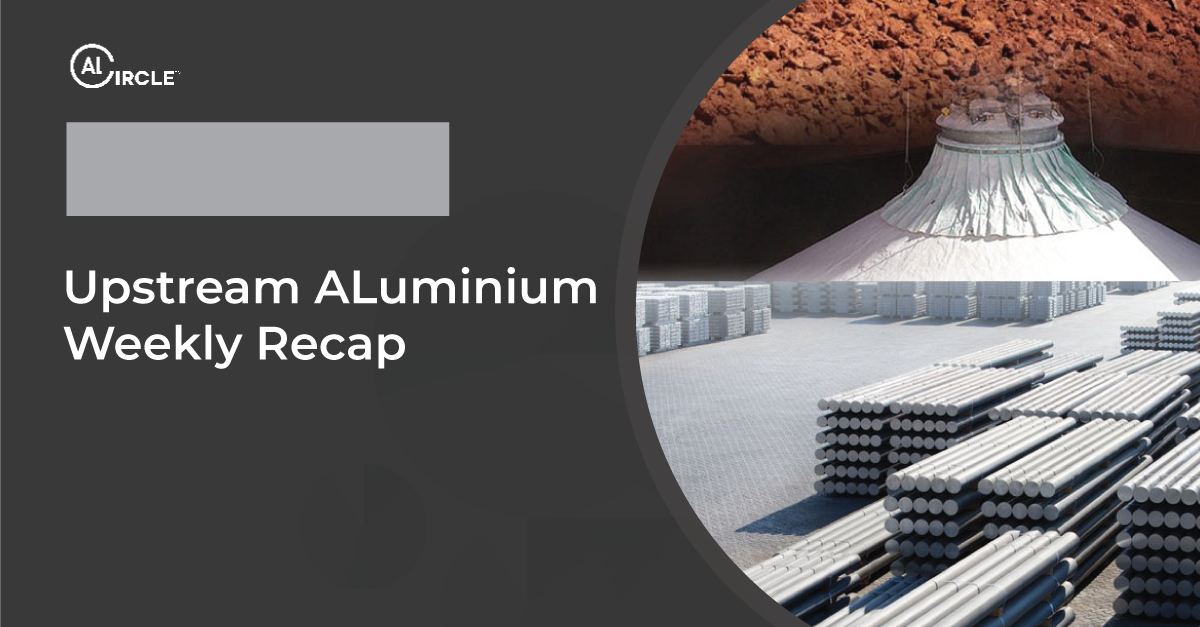For the past few weeks, the global aluminium industry has been facing major challenges due to the US tariffs on aluminium and steel. Although the entire supply chain was hugely impacted, the primary aluminium sector faced the hardest blow. To begin with, Japan’s Q2 premium dropped to a five-quarter low owing to the US tariff disrupting trade. After a strong surge in early March, Japan’s aluminium outbound trade premium for the second quarter of 2025 (April to June) reportedly dropped to USD 182 per tonne—a 20 per cent decline from the previous quarter (Q1’25), according to six sources involved in pricing discussions.

Ahead of the full implementation of US tariff policies, market sentiment remained cautious, while aluminium prices continued to fluctuate. Overnight, the most-traded SHFE aluminium 2505 contract opened at RMB 20,425 per tonne, reaching a high of RMB 20,465 per tonne and a low of RMB 20,365 per tonne, before closing at RMB 20,415 per tonne, down RMB 70 per tonne or 0.34 per cent.
On April 2, President Donald Trump announced a new round of reciprocal tariffs, maintaining the existing 25% duty on imports of unwrought aluminium and aluminium products. The scope of the tariffs was further expanded to include imports of beer and aluminium cans. Moreover, the newly announced ‘reciprocal tariffs’ on Southeast Asian countries could further weaken regional demand expectations. With US premiums no longer supporting significant structural arbitrage, regional premiums in Europe and Japan may remain under pressure, particularly if US demand declines and excess supply stays within local markets.
There have been changes in the LME prices as well. The LME aluminium price on Tuesday, April 1, opened at USD 2,542 per tonne, with a high of USD 2,551.5 per tonne, a low of USD 2,502 per tonne, and closed at USD 2,504.5 per tonne, down USD 34 per tonne, or 1.34 per cent. On Wednesday, April 2, LME aluminium opened at USD 2,509 per tonne, with a high of USD 2,510 per tonne, a low of USD 2,485 per tonne, and closed at USD 2,489.5 per tonne, down USD 15 per tonne, or 0.60 per cent.
The next day on April 3, the LME 3M daily average price closed at USD 2,460 per tonne. A 25 per cent tariff adds approximately USD 615 per tonne to the import cost. After including ocean freight and inland transportation, the total landed cost for aluminium imports into the US surpassed USD 800 per tonne. The escalation of tariffs has intensified global trade uncertainty, fuelling risk-off sentiment and prompting the liquidation of some long positions, which has further pressured aluminium prices.
However, on the other hand, India’s aluminium production experienced modest growth during the April to February (2024-2025 financial year), rising by 0.9 per cent to reach 38.36 lakh tonnes (3.836 million tonnes), up from 38 lakh tonnes (3.8 million tonnes) in the same period the previous year, according to provisional data from the Ministry of Mines. This marginal growth reflects broader trends in India’s mineral production. Industry analysts link the modest growth in aluminium production to several factors like volatility in the global aluminium market, marked by price fluctuations, etc.
Other important news includes –
Indian conglomerate Vedanta Aluminium was recently seen on an investment push. From announcing the construction of the aluminium park in Odisha with a cumulative investment of INR 1,00,000 crores ((US$11.55 billion) to seeking a global partner for expansion projects worth $20 billion, Vedanta is on a roll. Covering 253 acres, the aluminium park is set to attract over 100 SMEs and MSMEs, generating two lakh employment opportunities and lots more.
The highly anticipated joint venture between Alcoa Corporation and IGNIS Equity Holdings, SL (IGNIS EQT) has officially been established to secure the ongoing operation of Alcoa’s San Ciprián complex. Initially announced in October of the previous year, the venture was finalised on March 31, 2025, after extensive discussions with the Spanish National Government, with all agreements remaining intact.
Guinea, the world’s leading bauxite producer, is set to introduce its own Guinea Bauxite Price Index as the official benchmark by the end of 2025. This initiative aims to prevent low transfer pricing practices that have long diminished the value of the country’s vast bauxite reserves. The price index will enhance transparency, align export values with global market trends, and strengthen state revenues.
Ghana Bauxite Company has announced plans to construct a new alumina refinery in Awaso, located in the Western North Region. The government has welcomed this decision, recognising it as a crucial step in enhancing the value of the country’s natural resources and boosting economic growth. The announcement was made by the company’s General Manager, Alexander Gyedu, during the inauguration of its new Community Relations Office in Awaso.
A preliminary survey was recently conducted on Forest Department land in Narlam to assess the feasibility of proposed bauxite mining operations. The inspection, led by M.C. Kishore, Additional Director of State Mining and Geology, involved officials from the Revenue and Forest departments.
To tackle persistent overcapacity and stabilise global alumina prices, China has introduced a series of measures to curb the rapid expansion of alumina production. Outlined in the Ministry of Industry and Information Technology’s (MIIT) Action Plan for the High-Quality Development of the Aluminium Industry (2025–2027), these directives emphasise the need for a strategic shift in managing the country’s aluminium supply chain.













